Since social media platforms are inundated with content, it’s important to know how to choose hashtags that get more people seeing your posts.
Paying to get in front of people is one sure way to improve reach and visibility on social media. But to get your content in front of social media users for free (aka organically), you’re going to need some effective tactics. And, using hashtags is one.
However, hashtags are only effective if you know how to choose them strategically. Otherwise, they’re just taking up space or making you look spammy.
By the end of this article, you’ll be a hashtag hero!
How Hashtags Work – The Strategy You’re Missing
I love hashtags! From my experience, posts with hashtags perform better than posts without hashtags, especially on Twitter and Instagram.
Unfortunately, it’s obvious that some marketers have no clue how hashtags work. So, let’s take a minute to talk about hashtag strategy.
Sticking random words in your social media posts and putting pound signs in front of them lacks planning and strategy.
I think of social media hashtags as descriptive, clickable words that quickly tell us the what, who, where, and when.
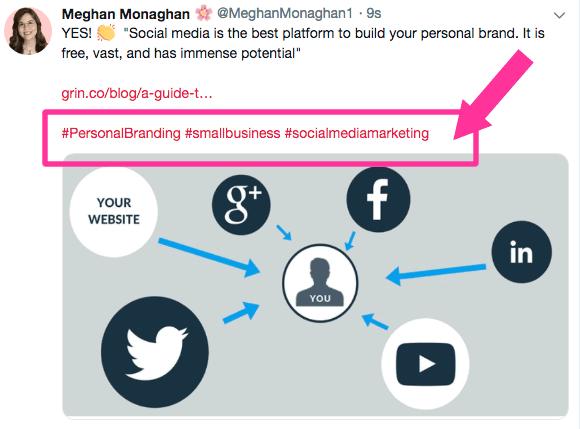
Carefully consider your hashtags’ relevance. Your goal isn’t just increasing the visibility of your post. Your goal is to get your posts in front of more people who care about your content. The more interested your audience, the better your targeting.
After all, what’s the value in increasing your visibility so that you reach more of the wrong people? Not much.
Hashtags give users more context regarding your post. Just by looking at hashtags, a social media user can determine whether or not the content is relevant to them.
Plus, hashtags are valuable for search too. First, they are clickable and reveal social posts using that hashtag. Second, they are essentially like keywords that bring up social posts with the same term—hashtag or not.
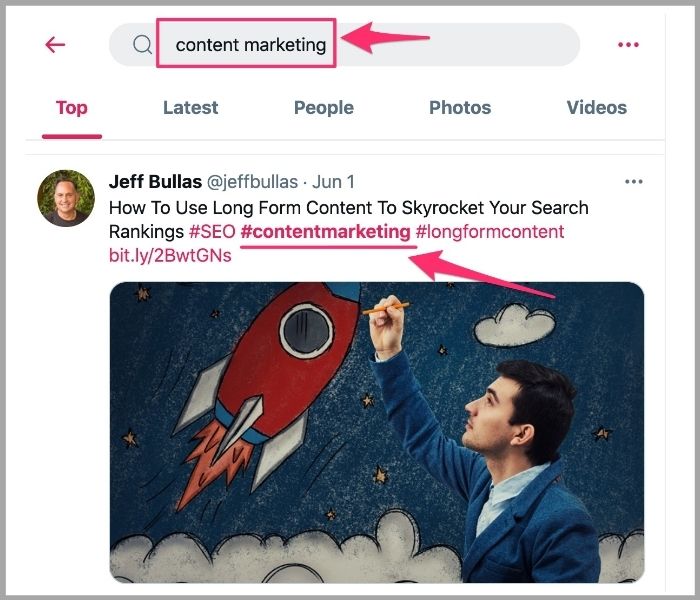
Your hashtag strategy is to:
- help your readers find the content they care about;
- increase who sees your content (visibility and reach); and,
- find better, more targeted prospects.
Knowing how to choose hashtags that please your prospects and help your business is a win-win scenario. It’s also an effective strategy to give your social media marketing a little lift.
How to Choose the Best Hashtags: An Easy, Foolproof Formula
Now that you understand more about hashtag strategy, how do you go about deciding which hashtags to use?
To simplify things, I’ve categorized hashtags into types. (I go into them in more detail below.)
- Topic
- Audience
- Location
- Trend
- Emphasis
- Branded
All you need to do is follow the formula using these types of hashtags.This process yields significantly better results and makes easy work of choosing hashtags.
Most social platforms can handle a couple of hashtags. More than four hashtags starts to look messy, spammy, and cluttered. The exception is Instagram where lots of hashtags are expected.
The “Hashtags that Help” Formula: An Easy Strategy to Follow
Topic + Audience + (insert any hashtag type here)
This formula produces a hashtag strategy that is intentional and targeted. You increase your post’s chances of discovery from your target market in searches. Plus, your post stands out more to those in your desired audience who are interested in your topics.
In other words, these are hashtags that help your prospects AND help your business.
You’ll notice that the hashtag types go from broad to specific in terms of popularity and preference. As you get more specific, you appeal to and attract a smaller audience. This is what you want!
Your content attracts all types of people. Some of these people are the right fit for your offer, some aren’t. The Pyramid of Popularity guides the types of content you create to entice your ideal avatar.
The more specific your content (and the less popular), the better your chances of creating content that appeals to your target market. That’s why viral content isn’t always effective in terms of generating business.
Popular content doesn’t equate to targeted or effective content.
You’ll notice that the Pyramid of Popularity echoes the Buyer’s Journey. Colder prospects are at the top of the pyramid/funnel where the content topics are broad. Fewer but warmer prospects are at the bottom of the pyramid/funnel where the content topics are specific and aimed at those who are farther along in the buying process.
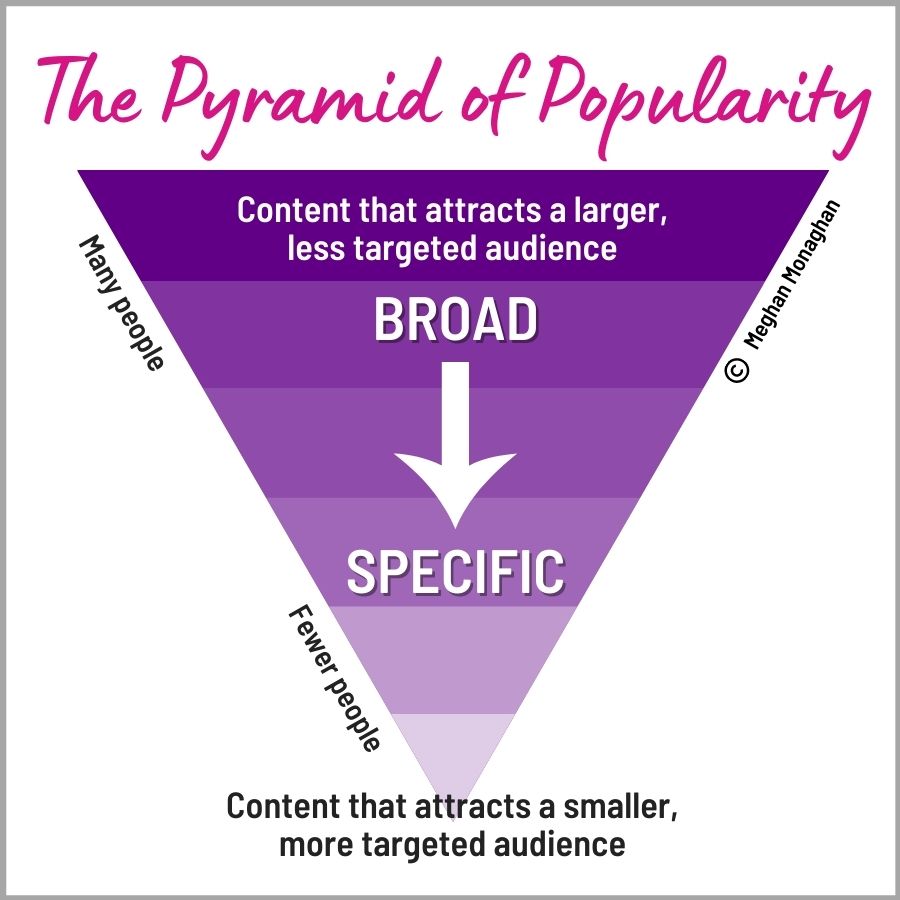
An Example of the Formula in Use
Let’s pretend you’re a yoga studio in Tennessee. Your ideal audience is women over 35 who are stay-at-home moms in Nashville.
Posting content about #yoga #health and #wellness may attract lots of women. But using more specific hashtags like #health #momlife #nashville may produce better awareness about your yoga studio for moms in Nashville who are thinking about their health.
Getting the picture?
Time to discuss what each category means so you can start using the formula!
Note: Instagram can handle a lot more hashtags. I suggest multiplying the formula by 3 or even 4.
Hashtag Types: A Simpler Way to Select Hashtags for Your Posts
There are many different ways to approach hashtags. This entire post reflects my methods for how to choose hashtags and use them in your social media content.
I always pay attention to effectiveness. But, sometimes I also employ different strategies because my goal isn’t always visibility and reach. So, sometimes I stray from the Hashtags that Help Formula.
Hopefully, categorizing hashtags into different types will demystify hashtags for you!
Always consider the end goal to determine your content marketing strategies and tactics.
Identify the Topic or Subject of the Content
Determine the main subject(s) of your social media post. Use the subject as your hashtag to tell readers WHAT your content is about.
Think of a hashtag as a subject, theme, or keyword. It identifies your content’s topic or genre for readers.
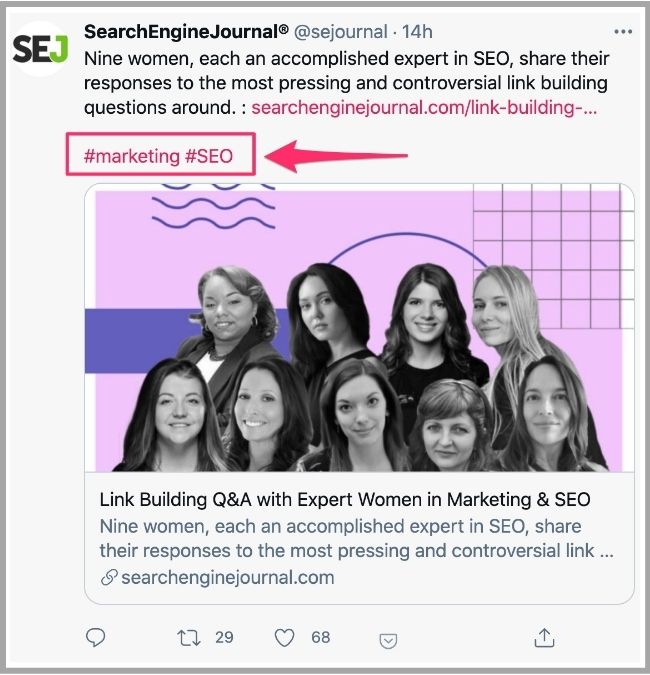
People tend to search by topic. Therefore, using topics as hashtags increases the chances of more people seeing your post.
Additionally, hashtags stand out and catch the attention of people who are interested in the topic.
Describe the Target Audience
While topic hashtags reign supreme, audience hashtags help identify WHO the post is for.
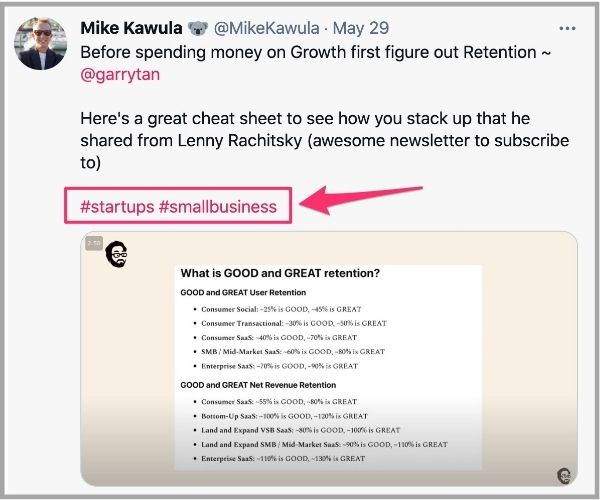
This option is terrific when you know your target market and want to call them out.
For example:
- moms/dads/parents
- work from home
- small business
- entrepreneurs
- startups
- writers
- CEOs/executives
Here examples of audience hashtags that are more niche:
#momlife
#dadlife
#parenthood
#laptoplifestyle
#workfromanywhere
#digitalnomad
#womeninmusic
Specify a Location to Get Super Specific
Use a location hashtag to identify WHERE you do business. A hashtag based on location isn’t for everyone. But if your geographical location is important, then adding your location is a smart strategy.
When people search for local businesses or attractions, they often add a location to their search. So, if you’re a local business, call attention to your brand by using a location hashtag.
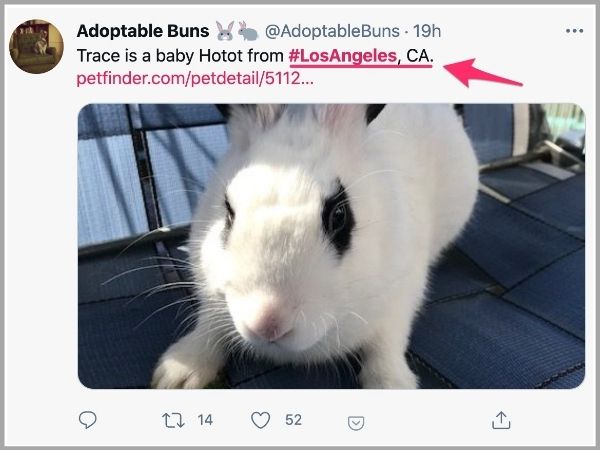
Here are just a few examples of businesses that may benefit from calling out their geographical location:
- consultants
- plumbers
- gift shops
- restaurants
- job hunters/seekers
- hotels
- tourist attraction
- veterinarians
- animal rescue
Again, a location hashtag doesn’t apply to all businesses. If you need to garner attention of people in your area, include a location hashtag for greater awareness.
#EastCoast
#London
#uk
#Nashville
#WashingtonDC
Piggyback on a Trend
There are popular hashtags that are related to trending topics, days of the week, holidays, events, culture, news, etc. You can take advantage of a trending hashtag to get more eyeballs on your social media posts.
Some of these trends happen every week, others just once a year. Planning is key so that your post’s timing makes sense.
#FridayFeeling
#MondayMotivation
#ValentinesDay
#ElectionDay
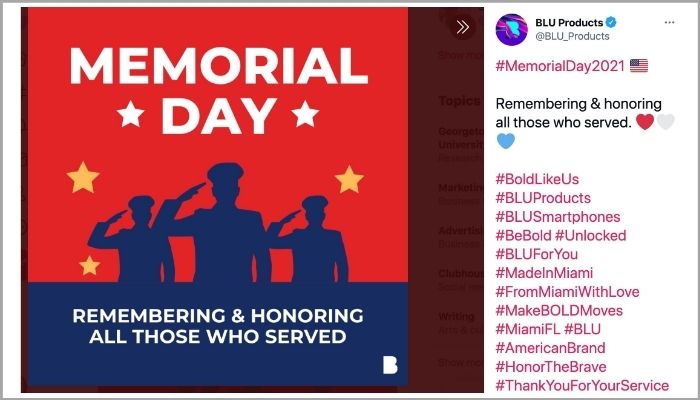
A word of caution with this type of hashtag. Make sure the content of your post aligns with the meaning of the hashtag. You wouldn’t want to use a hashtag inappropriately or capitalize on an event that makes you look out of touch, selfish, or opportunistic. Protect your brand!
Add Emphasis
Sometimes you want to greatly emphasize your point in a social media post. This could be for humor or to add more significance to the meaning of your content. Or, maybe you have a saying you use frequently, and it’s part of your brand.
#whoops
#truth
#justsayin
#amiright
Generally speaking, hashtags included for emphasis are more surface level. They probably get used more than they get clicked.
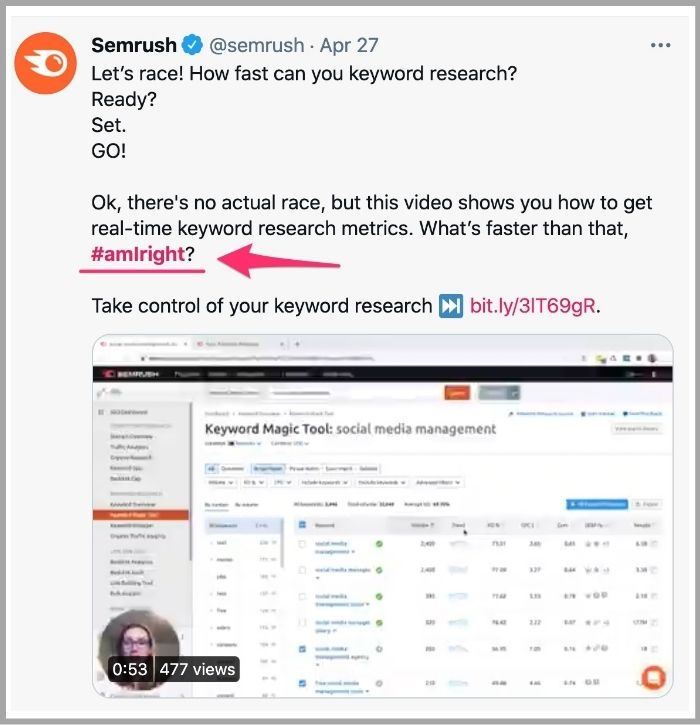
Don’t expect emphasis hashtags to help you a lot. This is one of those instances where your goal isn’t visibility or reach.
Hashtags for emphasis do give readers some context and signify when you’re being sarcastic, comedic, or passionate about something. They may be an important part of conveying your brand.
Get Creative with a Branded Hashtag
The last type of hashtag is one focused on your brand name, message, products, promotions, and events. This strategy works well for large companies and famous brands that already have a lot of fans, awareness, and visibility.
#TwitterSmarter
#QueenRadio
#SMMW
#sxsw
I encourage you to create your own branded hashtag. These are especially useful for categorizing your social media content so that, when clicked, a list of posts from your brand appear. For example, the hashtag #SmartBirdBlog is useful for someone who wants to see a list of our blog posts.
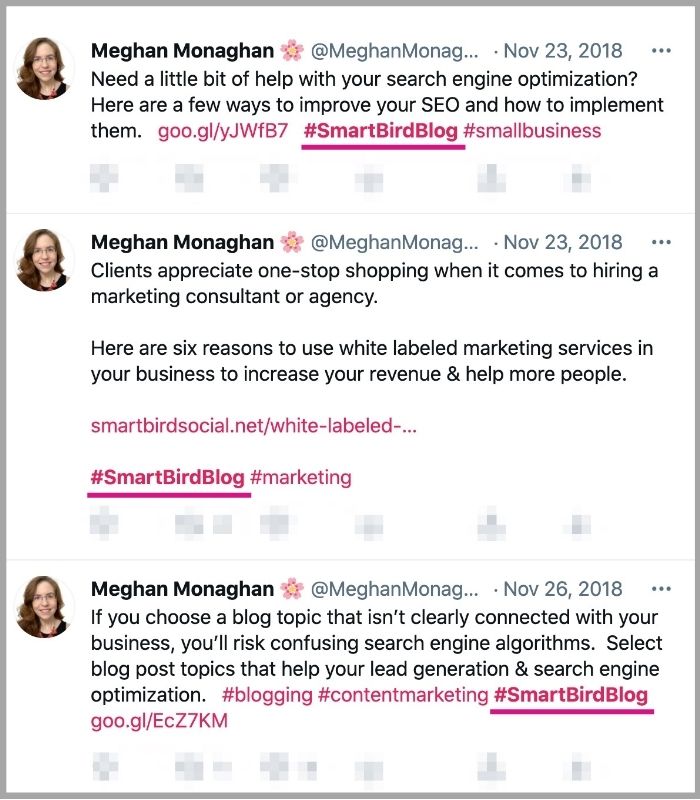
For a small marketing website like Smart Bird, people aren’t typing #SmartBirdBlog into a platform’s search. So, using that one hashtag alone would not amount to much of an increase in visibility and reach.
For smaller brands, the advantage of a branded hashtag is more about sending a message, running a campaign, or categorizing content.
The other thing about branded hashtags: no one “owns” a hashtag per say. But, you don’t want to use another brand’s hashtag if they’ve solidified it as their property in terms of awareness.
Here’s Why You Always Research Hashtags Before You Use Them
To yield the best, most fruitful results from your hashtags, ALWAYS research them. This is an important part of how to choose hashtags. Why?
Context
Does the hashtag mean what you think? Because sometimes you’d be shocked at what people are using regular, everyday words to describe. You may choose a hashtag that the porn industry has taken over or one that now has a political meaning. Beware!
Sentiment
Learn more about how people are using the hashtags you want to use. Is it in a positive or negative way? You have your brand to protect! So, determine what emotions and perceptions are aligned with the hashtags you want to use.
Popularity
If your hashtag isn’t popular—meaning people don’t care about it—then it’s probably better to choose a different term. Research will indicate whether the hashtags you are considering are cold, warm, or hot. Don’t waste the space!
Other Brands
I recommend checking out how people are implementing the hashtags you want to use. Again, no one “owns” a hashtag. But sometimes businesses or people have created hashtags that have become strongly synonymous with their brand. You’re trying to promote YOUR content, not another brand’s content.
General Circumstances
It’s just good practice to take a quick look on Twitter or Instagram to see what comes up when you search on a hashtag. Remember, your content will show up with all of the other accounts using the same hashtag. This may not be a problem. Or, you could end up associating your business with porn, politics, or a hate group.
Ask yourself, is it a hashtag that is:
- Associated with good things to align your brand with positive emotions
- Click-worthy…meaning, a term people care about
- Understandable by most people so that it makes sense to take up the space
My Top Free Tools for Researching Hashtags
Speaking of research, how can find out what hashtags mean and if they are worthwhile?
My top favorite go-to free tools for hashtag research are:
- Hashtagify
- All Hashtag
Hashtagify tells you the sentiment and popularity of hashtags as well as related terms. All Hashtag provides hashtag suggestions. And, Twitter shows you how people are using and interacting in real life with hashtags. (Instagram is an option for research too, but I prefer Twitter.)
Test Driving Your Hashtags: It’s About Relevance
Time to take your hashtags out for a joyride!
That’s right, click on your own hashtags. See where they take you.

If your content ends up amongst posts that are of similar relevance, then you’ve reached your destination. That means others who are searching for similar information will discover your content too.
If your posts don’t flow or fit with the hashtags you’re using, it’s time to rethink your strategy.
When people click on a hashtag, they expect to see relevant content. This is awesome because it helps you to reach a more targeted segment of people who care about what you’re publishing. People who may be your ideal customer.

You receive little benefit from using hashtags that are irrelevant.
For example, does a dog owner want to see content about cat food? Probably not (unless they are a cat owner too!). Does a resident of Los Angeles want to know about today’s menu for a local restaurant in Washington DC? Unlikely.
Remember that you’re choosing hashtags that increase awareness of your content and your brand. It’s about relevance and targeting.
Hashtag Benefits Beyond Extended Reach, Improved Visibility, and Better Targeting
By now you are on your way to becoming a hashtag pro! As you advance in your hashtag mastery, you’ll experience the benefits of hashtags. We discussed that hashtags:
- extend your content’s reach
- improve your posts’ visibility
- target your ideal audience
- organize your content
But…are there other benefits that aren’t as obvious? Yep!
Publishing social media content with topic hashtags has helped me in additional ways. There are “social signals” that may contribute in search and boost your influence when it comes to your industry. This isn’t necessarily a direct correlation. However, I’ve personally had my tweets show up in Google for keywords based on my hashtags.
Others are paying attention to your hashtags too. Onalytica named me an influencer several times based on various factors, including specific tweets that used topic hashtags.
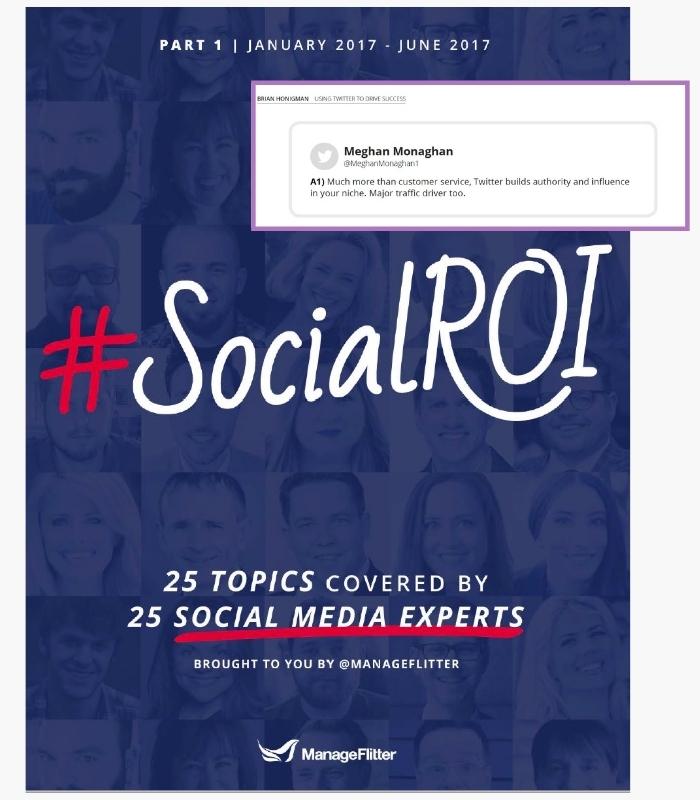
Using the branded hashtag #SocialROI got me included in ManageFlitter’s SocialROI book. Same goes for Buffer’s Twitter chat. Using their chat’s hashtag landed me a quote in one of their blog posts.
Can you see how investing a little time and effort in your hashtags may really pay off over time? I hope so!
Now You Know How to Choose Hashtags that Will Boost Your Marketing
Now that you’ve read this article, you should be on your way to understanding how to choose hashtags to better target your preferred audience and market your brand. And, I’ve explained the multiple benefits of an effective hashtag strategy that helps your business through heightened awareness and visibility.
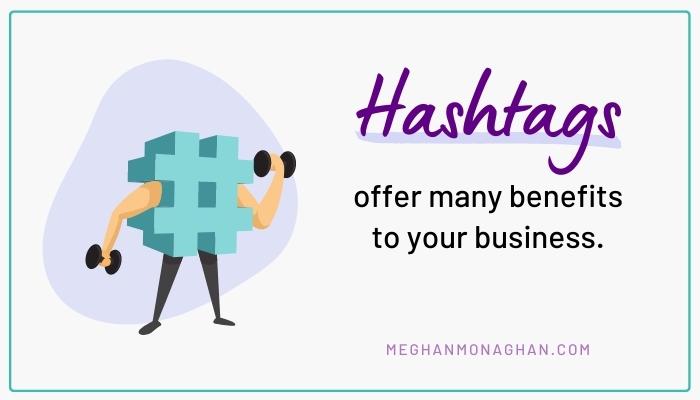
Hashtags are an important part of your social media strategy, so don’t ignore them.
This formula is designed to help you choose the best hashtags every time. Once you’ve used this process a couple of times, you’ll commit it to memory. And you’ll become a hashtag hero, just like I said you would!
UPDATED JUNE 8, 2021 | PUBLISHED FEBRUARY 6, 2019

Excellent article and super informative. You always deliver amazing content. I knew about hashtags but there is so much that’s kind of not know or understood but this was great in bringing up what and why to create a hashtag or to use one. Thank you!
Hello Kristen! Hashtags seem very misunderstood, so I was hoping to clarify the what and the why. Sounds like I did! Choosing hashtags that attract your audience and increase your posts’ visibility is totally free, so we should all love that. 😉 Thank you for stopping by to read the post and leave a comment. <3